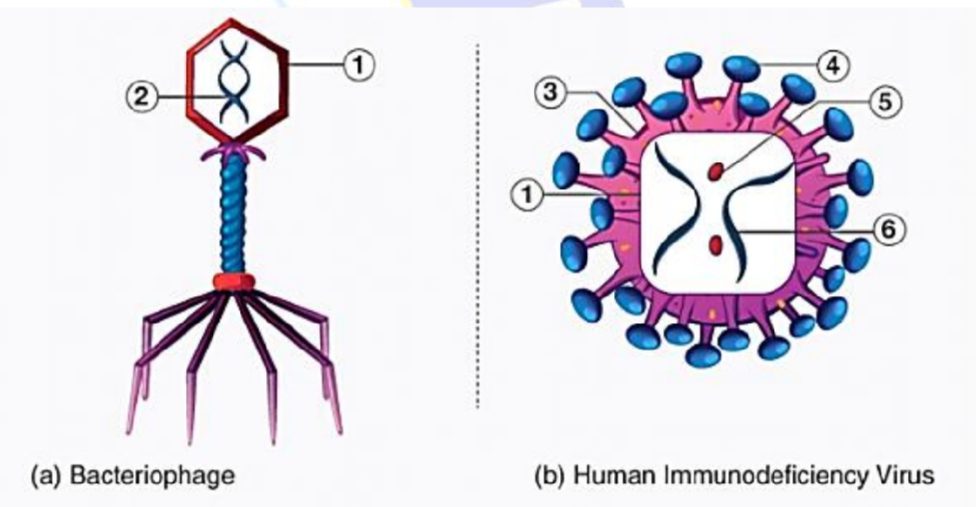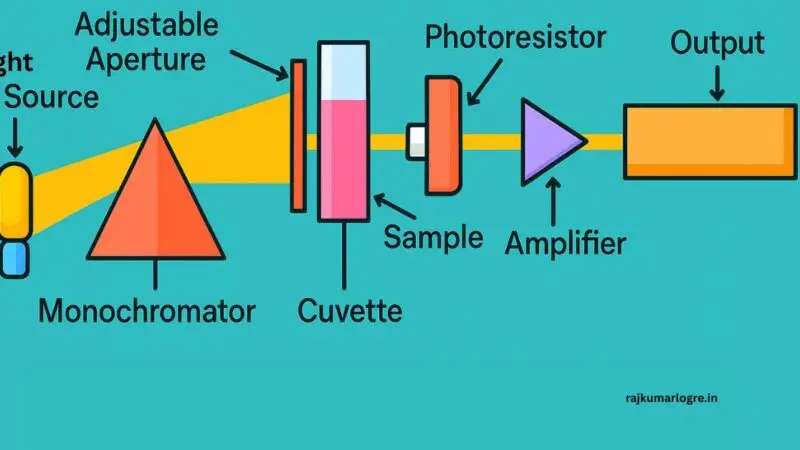What is Virus

What is a Virus?
A virus is a non-cellular, microscopic infectious agent that can only replicate inside a host cell. Biologically, viruses cannot be classified as living or non-living. A virus is an infectious entity that replicates only within the living cells of an organism. This is because it exhibits some traits of both living and non-living things.
In short, a virus is a non-cellular infectious unit made of genetic material and protein, which can invade and reproduce only within living cells of bacteria, plants, or animals.
For example, a virus cannot replicate outside a host cell because it lacks essential cellular machinery. So, it enters a specific host cell, attaches to it, injects its genetic material, uses the host’s mechanisms to reproduce, and finally causes the host cell to break, releasing new viruses.
Viruses can also be crystallized, something no other living organism can do. These unique features place viruses in a “gray zone” between living and non-living entities.
Structure and Function of Viruses

- Viruses are tiny, generally ranging in size from 30 to 50 nanometers.
- They are acellular and lack a cell wall, though they are surrounded by a protective protein coating called a capsid.
- A virus consists of either DNA or RNA as its genetic material.
Viruses depend on prokaryotic or eukaryotic host cells to provide the complex metabolic machinery needed for survival. The main role of a virus is to deliver its DNA or RNA genome into the host cell, which then transcribes and replicates it.
The viral genome is packed inside a symmetrical protein capsule, often called a nucleocapsid. This consists of nucleic acid (also called nucleoprotein) and associated proteins.
Difference Between Viruses and Bacteria
Bacteria and viruses are both microbes that cause many common and serious diseases. These range from mild colds to life-threatening conditions like necrotizing fasciitis (flesh-eating disease).
Bacteriophages and HIV
Viruses like bacteriophages and HIV belong to the Viridae family and genus Virus. Viruses are not placed in any biological kingdom because they are neither truly alive nor dead.
The term “virus” was coined in 1897 by Dutch microbiologist Martinus Willem Beijerinck, derived from the Latin word for poison.
Once a susceptible host cell is infected, a virus uses the host’s machinery to produce more viruses. Viruses consist of a DNA or RNA core surrounded by a protein coat, typically sized between 20 and 250 nanometers, visible only under an electron microscope.
Some viruses are composed of single- or double-stranded DNA or RNA. A fully infectious virus particle is called a virion, consisting of nucleic acid and an outer protein shell. Simple viruses encode about four proteins, while complex ones can encode 100–200 proteins.
The study of viruses is known as virology.
Characteristics of Viruses
- Viruses are non-cellular organisms enclosed in a protective shell.
- Spikes on their surface help attach to host cells.
- Viruses do not grow, breathe, or metabolize—they only reproduce.
- They are made of a protein coat (capsid) and a nucleic acid core (DNA or RNA).
- Viruses are considered both living and non-living. They are inactive outside the host.
- They use host enzymes and raw materials to reproduce inside host cells.
Classification of Viruses
Viruses are primarily classified based on:
- Phenotypic characteristics
- Genetic material (DNA/RNA)
- Chemical composition
- Capsid structure
- Shape and symmetry
- Replication method
- Genomic structure
Baltimore Classification System
Devised by David Baltimore in the 1970s (Nobel Prize winner), this is the most widely used system today.
Based on Genetic Material (Nucleic Acid)
DNA Viruses
- Contain DNA as genetic material.
- Single-stranded (ssDNA): e.g., Picornavirus, Parvovirus
- Double-stranded (dsDNA): e.g., Adenovirus, Herpesvirus
RNA Viruses
- Contain RNA as genetic material.
- Divided into:
- Positive-sense RNA (+RNA)
- Negative-sense RNA (−RNA)
- Examples: Polio virus, Hepatitis A, Rabies virus, Influenza virus
Based on Structure/Symmetry
Viruses come in various shapes, from simple to complex:
- Complex Viruses – e.g., Poxvirus
- Radial Symmetry Viruses – e.g., Bacteriophage
- Icosahedral Symmetry – e.g., Reovirus, Picornavirus
- Helical (Rod/Spiral) Symmetry – e.g., Paramyxovirus, Orthomyxovirus
Based on Replication Site and Properties
- Some viruses replicate inside cell organelles after invading the host.
- Most RNA viruses replicate in the host’s cytoplasm (except Influenza).
- Some replicate in both nucleus and cytoplasm.
- Others replicate solely in the nucleus.
- Replication via dsDNA intermediates – e.g., DNA viruses, Retroviruses
- Replication via ssRNA intermediates – e.g., all RNA viruses except Reoviruses and tumor-causing viruses.
Based on Host Type
There are four main types of viruses based on host:
- Animal Viruses – Infect animals and humans.
Examples: Influenza, Mumps, Rabies, Polio, Herpes - Plant Viruses – Infect plant cells; replication is host-dependent.
Examples: Potato Virus, Tobacco Mosaic Virus (TMV), Beet Yellow Virus, Cauliflower Mosaic Virus - Bacteriophages – Infect bacterial cells.
Examples: DNA viruses like MV-11, RNA phages - Insect Viruses – Infect insects; act as biological control agents in agriculture.
Examples: Ascovirus, Entomopoxvirus
Based on Transmission Mode
- Airborne – Spread through air; e.g., Swine Flu, Rhinovirus
- Fecal-Oral Route – Contaminated food/water; e.g., Hepatitis A, Polio, Rotavirus
- Sexually Transmitted – Via sexual contact; e.g., Retrovirus, Human Papillomavirus
- Bloodborne Transmission – Via transfusion; e.g., Hepatitis B, HIV
- Zoonotic Transmission – From animals/insects to humans; e.g., Rabies, Alpha virus, Flavivirus, Ebola
Virus Reproduction
Most viruses reproduce using the lytic cycle:
Lytic Cycle Steps:
➽ Attachment – Virus binds to host cell
➽ Entry – Injects genetic material into the host
➽ Replication – Hijacks host’s metabolism to produce viral components
➽ Assembly – Combines DNA/RNA with proteins to form new viruses
➽ Release – Host cell bursts, releasing new viruses to infect others
List of Viral Diseases
Viruses that had significant socio-economic impacts in recent decades:
➽ AIDS (Acquired Immunodeficiency Syndrome)
➽ Ebola
➽ Influenza
➽ SARS (Severe Acute Respiratory Syndrome)
➽ Chikungunya
➽ Smallpox (eradicated)
Economic Importance of Viruses
Viruses are widely used in biotechnology research because they exhibit both living and non-living traits. They can be beneficial or harmful:
- Vaccines – Diseases like smallpox, polio, mumps, and jaundice are controlled using dead or inactivated viruses as vaccines.
- Insect/Pest Control – Specific viruses control harmful insects/animals.
- Disease Management – e.g., T2 bacteriophage destroys E. coli, preventing dysentery. Used in virotherapy and gene therapy, especially for cancer.
- Research Models – Viruses are widely used in genetic engineering and molecular biology studies.
- Evolution Studies – Because viruses lie between life and non-life, they help us understand the origins of life.
- Nanotechnology – Viruses act as organic nanoparticles, used for nano-scale material arrangement.
- Ecological Role – One teaspoon of seawater contains millions of viruses, playing a key role in marine ecosystems. Some viruses help increase photosynthesis and reduce CO₂ levels by up to 3 gigatons annually.







5 thoughts on “What is Virus”